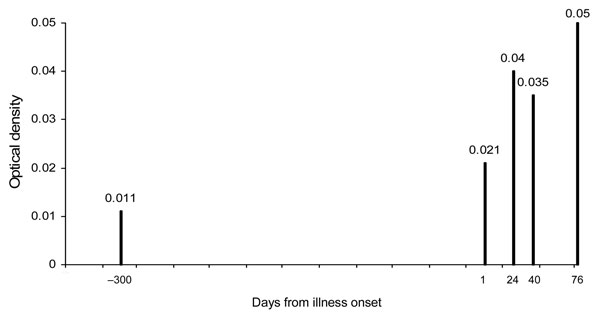Volume 14, Number 3—March 2008
Research
Exposure to Novel Parainfluenza Virus and Clinical Relevance in 2 Bottlenose Dolphin (Tursiops truncatus) Populations
Figure 1

Figure 1. Sample series of parainfluenza virus (PIV) antibody optical density in the positive control bottlenose dolphin (Tursiops truncatus) during time of respiratory illness and multiple positive viral isolations from grossly affected lung.
Page created: July 07, 2010
Page updated: July 07, 2010
Page reviewed: July 07, 2010
The conclusions, findings, and opinions expressed by authors contributing to this journal do not necessarily reflect the official position of the U.S. Department of Health and Human Services, the Public Health Service, the Centers for Disease Control and Prevention, or the authors' affiliated institutions. Use of trade names is for identification only and does not imply endorsement by any of the groups named above.